
Pages:
<< Back 1
2 3
4 5 6
7 8 9
10 Next >>
A
number of administrative changes took place in the last years of
the Wildman administration. When Dean Edward Bartlett resigned in
1949 to become president of Iliff School of Theology, George B.
Manhart was named acting dean for a year. Edgar C. Cumings came
from the presidency of Canterbury College to assume that office
until 1950, when Louis W. Norris of the philosophy and religion
department was appointed to the position.
 
The student personnel offices were completely reorganized in 1948
following the retirement of Louis Dirks as dean of men and the resignation
of Dean of Women Leota Colpitts. Named to the new post of dean of
students was Lawrence A. Riggs, a graduate of the University of
California with a doctorate from Columbia who had held a similar
position at Willamette College. Working with him were three assistant
deans: Lucille Scheuer, Ida Nelle Barnhart, and Robert H. Farber,
the last having returned to university service after the war as
secretary for veteran affairs. Trained counselors under the direction
of Dean Barnhart were assigned to each of the four university residence
halls for the first time. Dean Farber also acted as secretary of
the Rector Scholarship Foundation and directed the Placement Bureau.
Willard E. Umbreit of the physical education department became the
first full-time director of admissions. Upon the resignation of
Comptroller Howell Brooks in 1950, his assistant, Deward W. Smythe,
assumed that office. Longtime staffer, Frank DeVaney became assistant
comptroller. Wilbur J. Eckardt was appointed purchasing agent and
Ralph Bee cashier. Frederick L. Bergmann acted as director of publicity
in addition to his teaching duties in the English department, and
Marga Bruning Voltmer was made editor of university publications.
New by-laws approved by the board of trustees in 1947 expanded the
membership of that body from 35 to 40 and authorized the appointment
of a vice president to take charge of public relations and financial
promotion. The person named to this position, William H. Butterfield,
resigned after a few months, however, and the title was not to be
used for another two decades.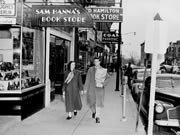

Rising
enrollments after the war prompted expansion of the teaching faculty.
Among the new members of the faculty were Austin D. Sprague and
Charles Ammerman in physics; Forst D. Fuller in zoology; Charles
L. Bieber and Robert D. Loring in geology and geography; and Harry
L. Hawkins and Kenneth S. Wagoner in psychology. Others were Jean
Sanders, Harold M. Garriott, Oliver W. Robinson, Harold O. Spicer,
and Edward L. Galligan in English; Woodrow L. Most, Ralph F. Carl,
Ruth Grace, Edith Sublette, Ralph McWilliams, and LeGrand Tennis
in Romance languages; Helen A. Leon and Raymond H. French in art;
Forrest L. Seal in speech; Robert M. Montgomery in Bible; Louis
W. Norris, Orville L. Davis, and Warren E. Steinkraus in philosophy
and religion; Clinton C. Green and Herbert L. Heller in education;
Clark F. Norton and Wallace B. Graves in political science; James
M. Erdmann in history; and Editha A. Hadcock, Wallace O. Yoder, V.
Judson Wyckoff, and H. David Maloney in economics.
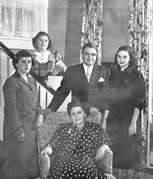
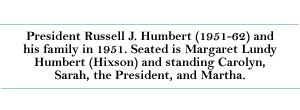
Also added were Charles P. Erdmann, Edwin R. Snavely, Ethel A. Mitchell,
and Martha F. Cornick in physical education; Lorna Barber in home
economics; and Raymond A. Mulligan and Otto L. Sonder in sociology.
The School of Music added May Agnes Strong, Donald H. White, Glen
Sherman, Cassel W. Grubb, Arthur D. Carkeek, Evelyn Gibson, and
Robert G. Grocock. New to the library staff was Marjory H. Royer.
President Wildman suffered a coronary occlusion in February 1950
and submitted his resignation to the board of trustees in June,
asking that it take effect one year later. He recovered sufficiently
to conduct the university's affairs during the 1950-51 academic
year with the assistance of newly appointed Dean Norris.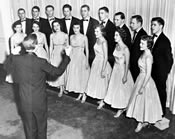
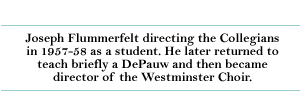
One of Wildman's last official acts was to preside over the dedication
ceremonies for the Memorial Student Union Building in May 1951.
After his departure from Greencastle he taught Old Testament at
the Perkins School of Theology of Southern Methodist University
and later at Dickinson College, where he died suddenly in November
1955. His widow, Forest Kyle Wildman, survived him for over three
decades, dying in 1987.
The board of trustees, given such early notice, was able to conduct
a leisurely search for a new president, aided by a faculty committee
appointed for that purpose. The choice finally fell upon Russell
Jay Humbert, a graduate of the College of Wooster and the Boston
University Theological School, who had served Methodist pastorates
in Akron, Toledo, and Youngstown, Ohio. Less scholarly but a better
speaker than his predecessor, the personable and gregarious Humbert
proved to be a popular administrator and effective fund raiser.
During the first year of his presidency alone he traveled over
50,000 miles, meeting with alumni clubs, attending 600 meetings,
and making 322 addresses- a striking contrast to Wildman, who is
said to have spent a greater proportion of his time on campus than
any other president in recent memory.
Back
to Top
Pages:
<< Back 1
2 3
4 5 6
7 8 9
10 Next >>
|








